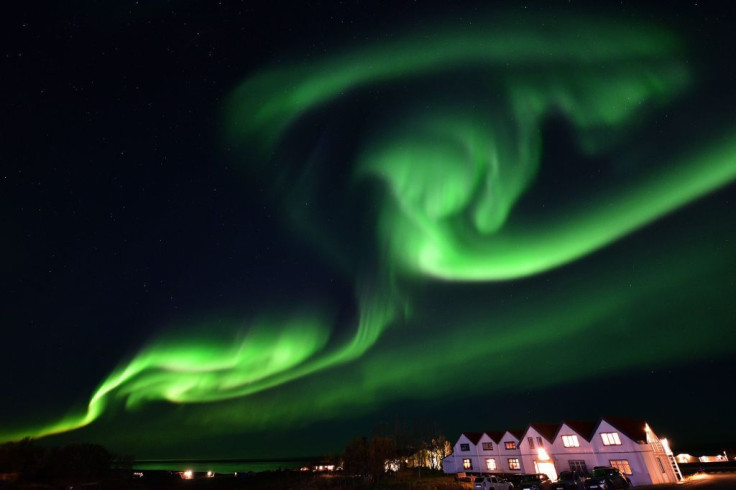Skywatchers Get Ready: Solar Storm To Spark Night Sky Displays Visible Even In New York
KEY POINTS
- Solar activity this past weekend prompted a geomagnetic storm warning
- It may cause auroras even in mid-latitudes when it reaches Earth
- Such geomagnetic storms may also disrupt the technology we rely on today
The sun recently erupted in a series of solar flares and coronal mass ejections (CME). When the charged particles from those eruptions arrive on earth this week, they may end up producing beautiful auroras. And these dazzling sky displays could be visible even in low-latitude areas — like New York.
The National Oceanic and Atmospheric Administration's (NOAA) Space Weather Prediction Center (SWPC) issued a geomagnetic storm watch for May 25-27 because of flare activity on the sun May 22 -23. According to SpaceWeather.com, the solar flares were "unlike anything we've seen in years."
The geomagnetic storm watches for May 25 and 27 is G1 (minor) while the predicted storm level for May 26 is a G2 (moderate), the alert posted on Monday states. When such geomagnetic storms happen and the charged particles travel down the earth's magnetic field and interact with the atmosphere, it can produce the Northern Lights display. This time, an aurora may be seen even in middle latitudes where auroras aren't typically observed.
"Aurora may be seen as low as New York to Wisconsin to Washington state," the alert noted.
Sky watchers may therefore want to stay alert and keep their eyes on the sky this week.
We may expect increase in solar activity
The sun's magnetic field goes through an 11-year cycle that affects the amount of activity on its surface, NASA said. Beginning at a solar minimum when it has the least number of sunspots, solar activity increases along with the number of sunspots until the solar maximum at the middle of the cycle when it has the most sunspots.
According to CNET, the current Solar Cycle, which started in 2019, is so far at the stage where solar activity may begin to increase, so it's possible that we may be in for more of such events in the coming years.
But while increasing the chances of spotting an aurora in the lower latitudes, such events also pose some risks. According to the NOAA alert, this week's event may also result in power grid fluctuations, satellite orientation "irregularities" and "increased drag on low Earth-orbit satellites."
Solar storms have proven to be quite disruptive in the past. For instance, a solar storm in 2017 caused ham radios to turn static during Hurricane Irma in the Carribean, Bloomberg noted. Another one in 2015 caused troubles for GPS in the Northeast U.S., the outlet said, stating that "the danger isn't hypothetical."

© Copyright IBTimes 2024. All rights reserved.






















